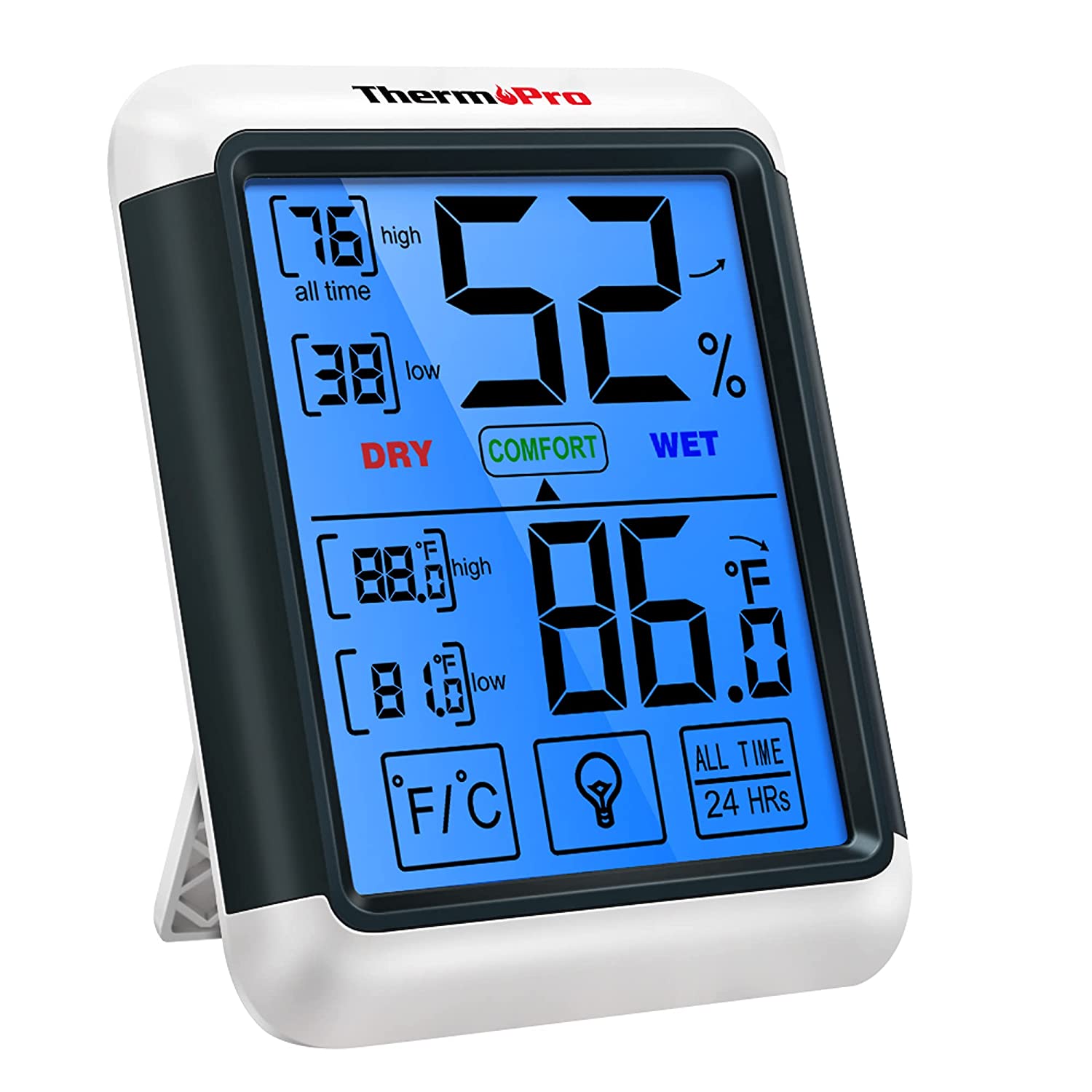How to calibrate a Humidity Meter ie hygrometer?
If you have an analog hygrometer, you want to make sure it is as accurate as possible for the best results and use. To achieve this, there is a simple calibration test you can follow on your own to achieve maximum accuracy called the salt test. The best part is, it only takes a few steps.
Hygrometer Salt Test

You will need some supplies first:
- 2 teaspoons of salt
- Distilled water
- Zip lock bag
- Hygrometer that can be calibrated
Once you have all these supplies, you are ready to go. The whole process will take less than a minute to set up, but you must wait 12 hours for results! Check out our Temp Humidity meters.
- Place your 2 teaspoons of salt into a small dish/bowl (some use a container cap of some sort)
- Dampen the salt with the distilled water, do not put more than a few drops onto the salt, as you do not want it to dissolve.
- Place your hygrometer and salt into the plastic bag, and make sure it is sealed shut
- After 12 hours, if the hygrometer is correctly calibrated, the reading should be 75 percent humidity.
- If your hygrometer is not reading the correct number, do not fret, simply use the manual dial to adjust your meter to 75 percent.
- Mission successful!
Following these simple steps is an easy way to calibrate your analog hygrometer, but there is an even simpler solution, purchase a calibrated digital hygrometer, they already come calibrated!
Digital hygrometers are a more reliable measurement tool than analog hygrometers because they have a 5%RH percent accuracy compared to the 10%RH percent accuracy of analog hygrometers.
More to come
to put it simply is “the percentage of water in the air, compared with the maximum possible amount of water present in the air at the current temperature”. 100 % RH = water vapour.
Example:
When a CB12 dehumidifier is rated at @30degC 80%RH it can take out up to 12L/day, if the climate changes to 15 degC and 80%RH over winter the same CB12 may take out only 4-5 L/day. With high condensation in closed homes and apartments it pays to buy a larger model say CB20 or CB 30 that will remove more moisture in cooler temperatures during winter.
Dewpoint =
When air of a certain temperature and relative humidity is cooled the relative humidity increases because warm air can contain more water vapour than cold air. If one has a surface that is cold the water vapour will condense on the surface at a certain temperature. The temperature at surface condensation is called the air’s dew point. Dew means that water vapour from the air condenses on surfaces, such as car roofs and the outside of bottles containing cold liquids because the surface temperature is below the dewpoint.